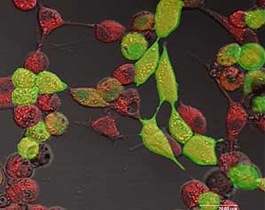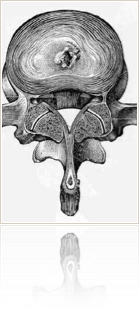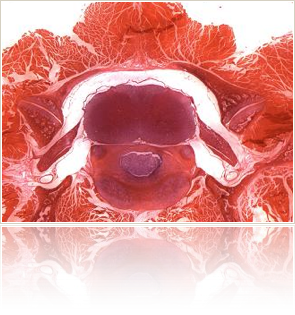




After the adult MSCs have been isolated, they must be differentiated into the appropriate type of cells. When tissue engineering an intervertebral disc, two different cells types will be needed: cells for the nucleus pulposus and cells for the annulus fibrosus. Using a combination of different growth factors and environments, stem cells can be transformed into intervertebral disc-like cells [1, 2, 5]. Perhaps the most important growth factors required are transforming growth factor-beta (TGF-b) and fibroblast growth factor (FGF) [2]. When stem cells are exposed to these factors they turn into chondrocyte-type cells, that secrete an ECM similar to that of cartilage. The ECM of these differentiated MSCs contains large amounts of proteoglycans and collagen, which is very similar the ECM of intervertebral discs [2]. 

 In addition, the ECM tends to contain large amount of hyaluronan, which helps create the gel-like material of the discs.
In addition, the ECM tends to contain large amount of hyaluronan, which helps create the gel-like material of the discs.



It has also been shown that when MSCs are cultured and differentiated in an environment of high cell densities, they begin to form cells very similar to those of the nucleus pulposus [1]. Thus, a combination of environment and chemicals (namely growth factors) will be necessary to obtain the desired MSC differentiation.
Although there is much active research in this area, it is still unclear exactly what factors are needed to obtain a certain cell type. In addition, it is unclear what needs to be done to create cells specifically for the nucleus pulposus and specifically for the annulus fibrosus [1]. However, once these cell types have been obtained, much work is still left to be done. Tissue engineering deals with creating a complete functional construct. Just obtaining cells and differentiating them into the desired types does not constitute and tissue. The cells must be organized into a 3D structure that will make them function as a tissue.






2. Cell Differentiation


